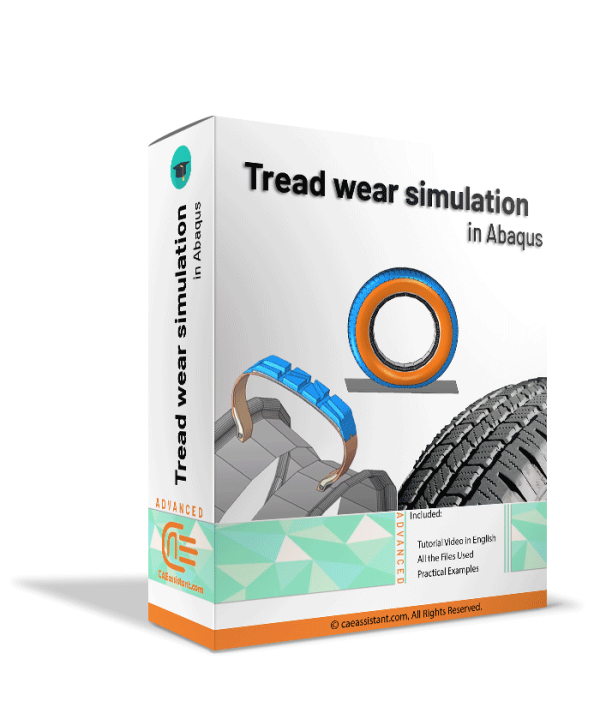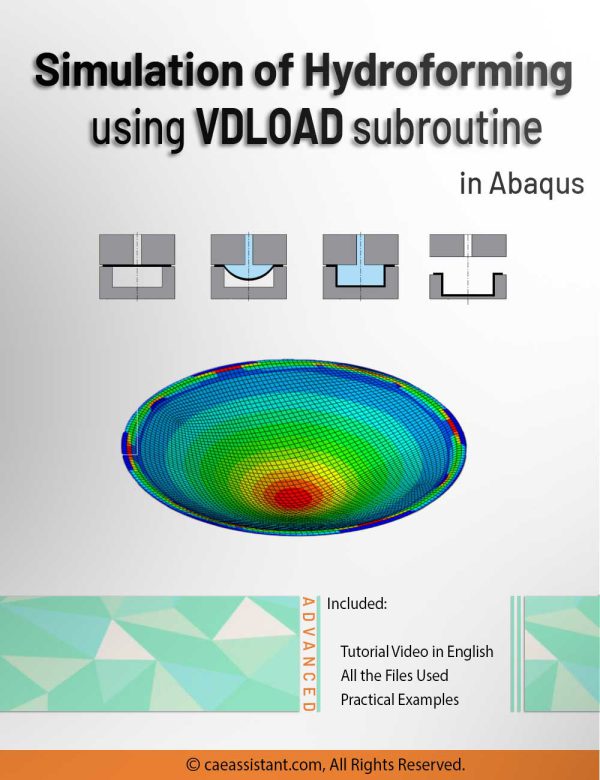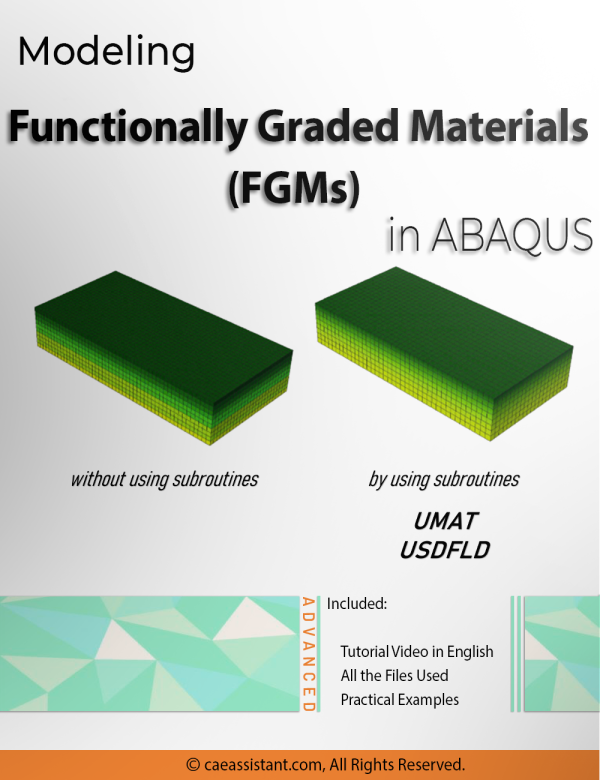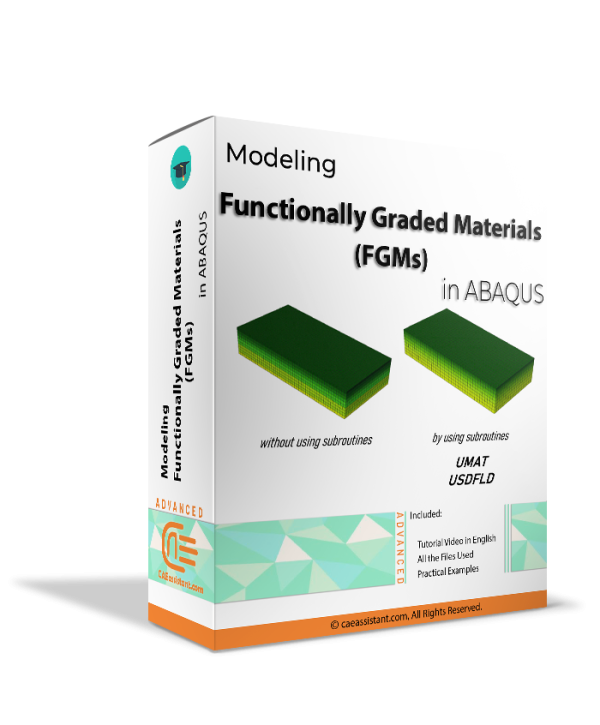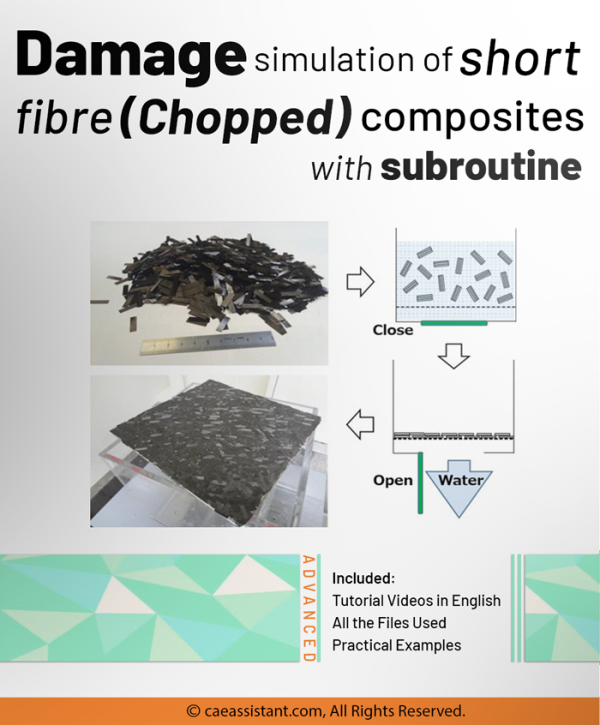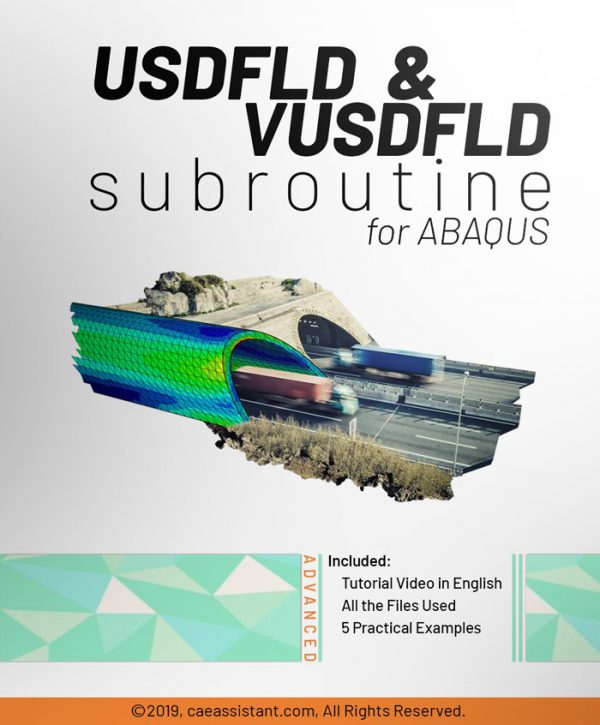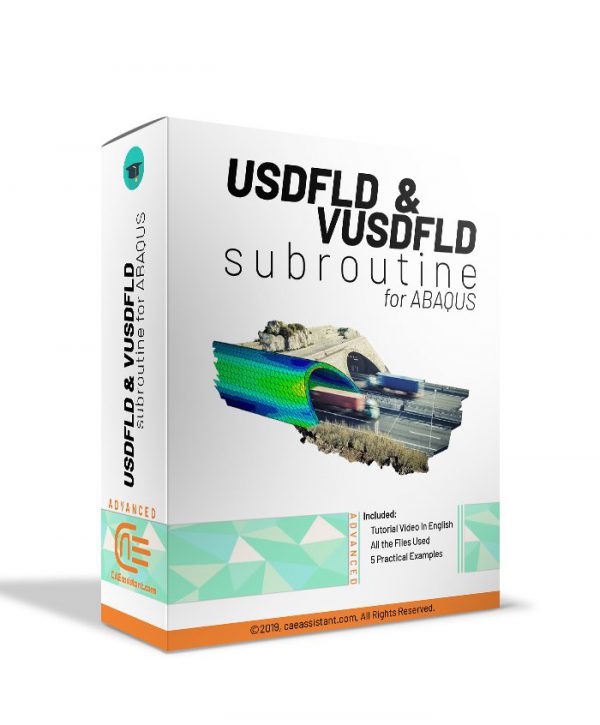FORTRAN
Tread wear simulation in Abaqus
This training package provides a comprehensive exploration of tire tread wear, focusing on its simulation using the UMESHMOTION subroutine in ABAQUS. Tread wear, the gradual erosion of a tire's outer rubber surface, impacts crucial performance aspects like traction and handling. The package elucidates the importance of tread wear simulation, emphasizing safety, performance optimization, regulatory compliance, durability, cost efficiency, environmental impact, and consumer confidence.
The UMESHMOTION subroutine, a key element in ABAQUS, is demystified through illustrative examples. Its application in modeling wear processes, specifically employing the Archard model, is highlighted—particularly in node movement specification during adaptive meshing.
The workshop within this package delves into simulating tire wear at a speed of 32 km/h over 1000 hours, utilizing the UMESHMOTION subroutine and Archard equations. The tire modeling process, transitioning from axisymmetric to three-dimensional elements, is detailed, considering both slip and non-slip modes of movement.
This resource serves as a valuable guide for professionals and enthusiasts seeking to understand and implement effective tread wear simulation techniques using advanced computational tools.
Simulation of Hydroforming using VDLOAD subroutine in Abaqus
Explore the fundamentals of hydroforming simulation in Abaqus alongside the VDLOAD subroutine with our comprehensive guide. This tutorial unravels the essence of hydroforming, a specialized metal shaping technique applicable to diverse materials like steel, copper, and aluminum. Delve into the intricacies of sheet and tube hydroforming, crucial in manufacturing components for automotive, aerospace, and medical industries.
The workshop component specifically delves into advanced hydroforming simulation using the VDLOAD subroutine, emphasizing its role in specifying fluid pressure. Learn the application of the Smooth Amplitude option for defining part displacement without introducing dynamic changes during problem-solving. Conclude with a comparative analysis of simulation outcomes, exploring scenarios with and without fluid pressure, complemented by discussions on subroutine writing. This guide offers a straightforward exploration of hydroforming and VDLOAD, providing valuable insights for efficient and accurate simulations.
Modeling Functionally Graded Materials (FGMs) in ABAQUS
Dive into the realm of innovative engineering with our comprehensive tutorial package, designed to empower you in modeling Functionally Graded Materials (FGM) using the Abaqus USDFLD subroutine. Uncover the fascinating world of FGMs, materials that ingeniously vary their composition and microstructure, offering a nuanced control over mechanical, thermal, and other properties.
The workshop component takes you on an exploration of crack paths in Spherical Functionally Graded Materials, emphasizing simulation techniques using Abaqus Standard and the USDFLD subroutine. Uncover the secrets of stress distribution within a pressured, empty sphere, and enhance your skills by implementing the XFEM method for precise crack characterization. This training ensures you gain valuable insights into subroutine development, empowering materials engineers and designers to innovate and elevate the performance of structures across various industries. Embark on your journey to mastery with this all-encompassing tutorial package.
Damage simulation of short fibre composites with subroutine
Short fiber composites consist of chopped fibers and a matrix, forming a discontinuous fiber-reinforced material, with fibers typically positioned either aligned or randomly within the matrix based on the intended application. In this training package, you will learn how to model the short fiber composite (SFC) damage in Abaqus based on this article: “Damage Modeling in Random Short Glass Fiber Reinforced Composites Including Permanent Strain and Unilateral Effect”. In the lesson one, you will learn the fundamentals such as the SFCs advantages, applications, and etc. Moving on to Lesson 2, the focus shifts to modeling Short Fiber Composites in Abaqus. The lesson introduces the critical decision between Macro and Micro modeling, which this package do a macro modeling. Lesson 3 advances the learning journey by exploring damage modeling in Short Fiber Composites, particularly through Dano's model. This macroscopic approach incorporates irreversible processes and internal variables, addressing anisotropic damage, unilateral effects, and residual effects. Lesson 4 bridges theory to practical application, guiding users on how to implement Dano's model in Abaqus through the VUSDFLD subroutine. The tutorial navigates through the subroutine's flowchart, explaining each line sequentially. Complementing the lessons are two workshops. Workshop 1 features a 2D composite plate with a hole using plane stress elements, offering a detailed breakdown of material properties, boundary conditions, and simulation procedures. Workshop 2, mirroring the first, employs shell elements, showcasing variations in element types while maintaining consistency with the utilization of the VUSDFLD subroutine.
Introduction to USDFLD and VUSDFLD Subroutine
In this usable tutorial, the material properties can change to an arbitrary dependent variable. One of the most important advantages of this subroutine is simplicity and applicability. Various and high usage examples are unique characteristics of the training package.
This training package includes 5 workshops that help you to fully learn how to use USDFLD and VUSDFLD subroutines in Abaqus software. By means of these subroutines, you will have expertise redefine field variables at a material point by the solution dependence of standard and explicit, respectively.
